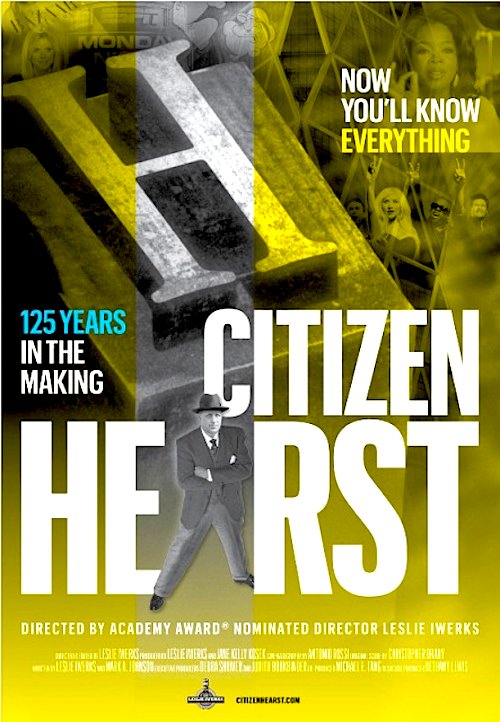By Joe Bendel. His name has become synonymous with yellow journalism, conspicuous consumption, and raw power. The son of a self-made mining tycoon, William Randolph Hearst always fancied himself a champion of the working people and to his credit, he usually had a good sense of what they wanted to read. Director-editor-co-writer-co-producer Leslie Iwerks profiles the man and the media empire he launched in Citizen Hearst, which begins a run of special nationwide screenings this Thursday to celebrate the one hundred twenty-fifth anniversary of the Hearst empire.
As Indiewire’s Leonard Maltin observes in Citizen, Charles Foster Kane was not exactly Hearst, but it was not that far off. On the other hand, Citizen Kane’s treatment of his actress-lover Marian Davies was pretty harsh. Dropping out of the Ivy League, Hearst started his empire with the San Francisco Examiner, which his father had won as part of a gambling debt. Hearst built what had always been the shabby second fiddle to the Chronicle into the model of his brand of yellow journalism. It was a formula he expanded nationwide, eventually expanding into newsreels and early television stations. Of course, there was also San Simeon, the compulsive collecting, his mostly unsuccessful political campaigns, and his scandalous relationship with Davies.
 Citizen emphasizes the up-and-down nature of Hearst’s fortunes within his lifetime. While never destitute, he was humbled at times. That is certainly good dramatic fodder, but only about a third of Iwerks’ film is dedicated to Hearst proper (and completely ignores his principled anti-Communism). The rest of the story follows the company after the death of its larger than life founder. The most fascinating post-Hearst development by far was the fate of the Examiner, a consistent voice of Hearst’s brand of populism, brought to a standstill by a violent union strike. With Examiner advertisers openly intimidated and employees attacked, the 1968 conflict led to one death. Ultimately, the Examiner would be absorbed by its old non-union rival, which in turn was absorbed back into Hearst.
Citizen emphasizes the up-and-down nature of Hearst’s fortunes within his lifetime. While never destitute, he was humbled at times. That is certainly good dramatic fodder, but only about a third of Iwerks’ film is dedicated to Hearst proper (and completely ignores his principled anti-Communism). The rest of the story follows the company after the death of its larger than life founder. The most fascinating post-Hearst development by far was the fate of the Examiner, a consistent voice of Hearst’s brand of populism, brought to a standstill by a violent union strike. With Examiner advertisers openly intimidated and employees attacked, the 1968 conflict led to one death. Ultimately, the Examiner would be absorbed by its old non-union rival, which in turn was absorbed back into Hearst.
At this point, Citizen Hearst essentially becomes a promotional film for the Hearst of today, celebrating its profitable business decisions, such as changing the A&E network from an arts showcase into a reality programming freak show. Sure, it made money, but what would an art collector like old man Hearst think? Still, there are some interesting conversations with Norman Foster, the architect of their new, innovatively green New York headquarters – but he has his own documentary available, How Much Does Your Building Weigh, Mr. Foster for those intrigued by his geodesic style.
Beyond Maltin, Citizen Hearst talks with many of the Hearsts still involved in the family business. Dan Rather also appears, presumably representing contemporary disgraced/facts-optional yellow journalists. Iwerks even gets celebrity assists from frequent Hearst cover model Heidi Klum and Oprah Winfrey, a television host who once had an afternoon show that was very popular but has since largely disappeared from view. Indeed, the final third of the documentary has the tone of an E! network special.
Hearst, the self-styled progressive, would likely approve of most of the media conglomerate bearing his name today. However, the further Citizen Hearst strays from the enigmatic title figure, the less interesting it will be to non-Hearst employees. Though there is good stuff in the first hour, it is probably best saved for subsequent home viewing. For those soon interviewing with a Hearst division, it screens this Thursday (3/14) in New York at the Clearview Chelsea and 1st & 62nd Street Theatres.
LFM GRADE: C+
Posted on March 12th, 2013 at 10:09am.